 Go
to the Archive index
Go
to the Archive indexJon Sahl in the USA recently found a cyclemotor engine, which he is trying to identify, and asks if any NACC member can help. The only identification marks are "Cyclemotor" cast into the crankcase, "patented" at the cylinder base and "Motor no. 23543". It seems to be designed to fit inside or attach to a rear bicycle wheel and has an internal-tooth chain drive from crank to magneto to final drive. Any ideas, anybody?
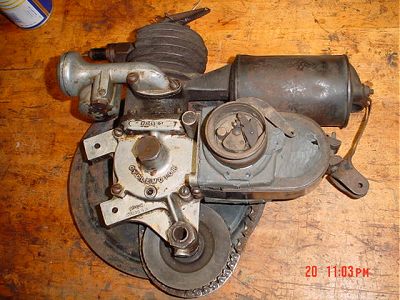
Two views of the Cyclemotor engine
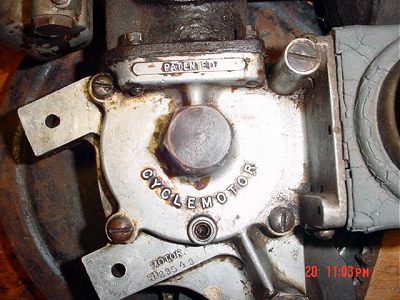
First published, April 2007
Within minutes of the April 2007 edition of Buzzing landing on their doormats, the Iceni CAM team had an answer winging its way to Jon:
We've just seen the picture of the Cyclemotor engine in Buzzing magazine. We can't tell you a great deal, but can tell you it was made during the 1920s by the Cyclemotor Corporation of Rochester, NY. (It is possible that the first two digits of the engine number indicate that it was made in 1923 - on the other hand, that might just be coincidence). The unit fits into the triangle of the cycle frame with the magneto to the front and the carburetter facing to the back. Clamps round the bicycle's seat tube fit onto the two lugs on the crankcase. Here is a picture, sorry but it's not very good quality. Nevertheless, it does show how it all fits together. The final drive is by twisted belt to the rear wheel.
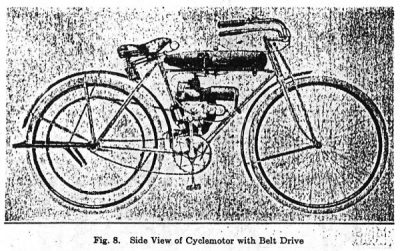
The Cyclemotor was mentioned in From the New World in the East Anglian Cyclemotor Club's magazine, Buzzing, Volume 2, Number 2.
In your article Identity Parade of April 2007 the Cyclemotor engine has a "Patented" mark on the crankcase; on my Cyclemotor the mark is "Pat. Pending" and at the cylinder base the "Motor no. 1 22 36".
From the history of ALSTOM Signaling Inc - formerly General Railway Signal Company (GRS):
During 1915 and 1916, GRS manufactured small gasoline engines for Cyclemotor Corporation of Rochester,New York. The single cylinder air-cooled engines got up to 100 miles to a gallon and, together with their rear wheel belt transmission drive system, weighed only 21 pounds. They provided a top speed of 25mph on a level road.
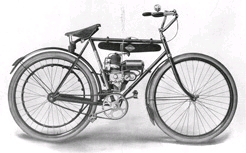
You say that "It is possible that the first two digits of the engine number indicate that it was made in 1923 - on the other hand, that might just be coincidence". In my case that would that mean the number indicates a 1912 engine? "Pat. Pending" may be previous to the GSR production (1915-1916)?
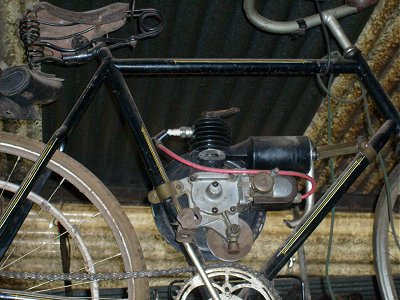
Ubaldo's engine uses different castings from John Sahl's - not only does it say "Patent Pending" instead of "Patented", but also the ridge between the cylinder base flange and the crankshaft journal on Jon's engine is not present on Ubaldo's. Another difference is the primary drive chain: a roller chain on Ubaldo's engine,, internally toothed on Jon's. This all suggests that Ubaldo's engine is from a different production run from Jon's. Our guess (and it is just a guess) is that Ubaldo's is a GSR-made one from 1915/16 and that Jon's is from the 1920s. It begins to look as if the engine numbers are just that: a simple serial number.
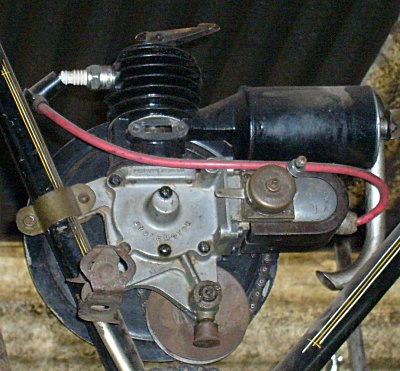
Further research has uncovered other versions of the Cyclemotor. When sold as an auxiliary engine to attach to a bicycle, it was simply known as the "Cyclemotor". However, it was also sold as a complete machine under the name of the "Evans Cyclemotor".
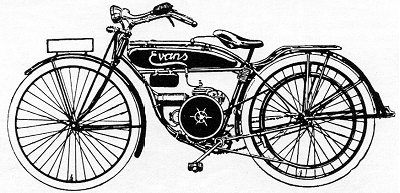
1922 Evans Cyclemotor
Enough of catalogue pictures: here's a real one:
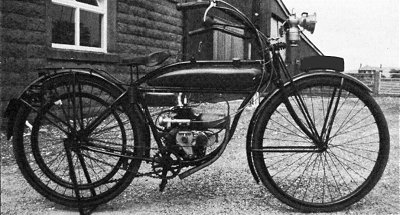
Evans Cyclemotor
The machine pictured above has yet another variation on the crankcase casting with a strengthened support for the pulley countershaft.
The Evans Cyclemotor was imported to France by two concerns: Géo Dupuy of 31 rue Poussin in the 16th arrondissement of Paris, and Coren & David in Orange, Vaucluse. On 13 October 1921 an Evans set the world speed record for an under-100cc machine with an average speed of 54kph along the allée des Acacias in the Bois du Boulogne.
The record-breaking machine is recorded as having a capacity of 91cc. This must have been a sleeved-down version of the engine, since the normal capacity of a Cyclemotor was 119cc.
A pair of sectioned Cyclemotor engines were on display at the 1922 Paris Salon. They are shown in the picture below (with apologies for its poor quality).
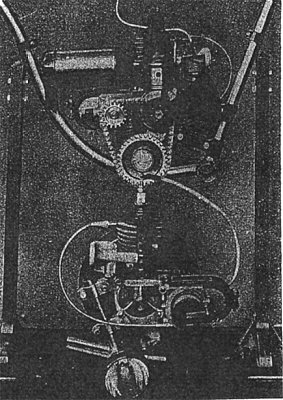
Cyclemotor engines
The upper engine clearly shows the toothed chain drive that gave a 1:1.94 primary reduction. The lower engine appears to have yet another crankcase design - but we think that this is not the case: it is the way that it has been sectioned that creates this illusion. The secondary drive was by belt, though there were various versions of this too: a straight leather belt, then a twisted leather belt, then a rubber V-belt.
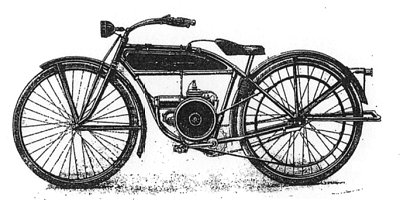
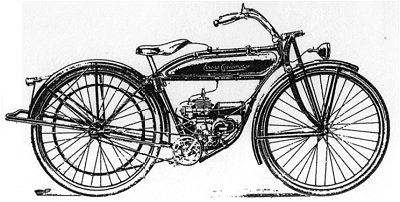
Two more Evans Cyclemotors
The Cyclemotor was also made in Germany by Stock and by Evans-Pondorf. The Evans-Pondorf version was short-lived because it was not officially licensed. Stock had a licence from Evans and took action against Evans-Pondorf to halt their production.